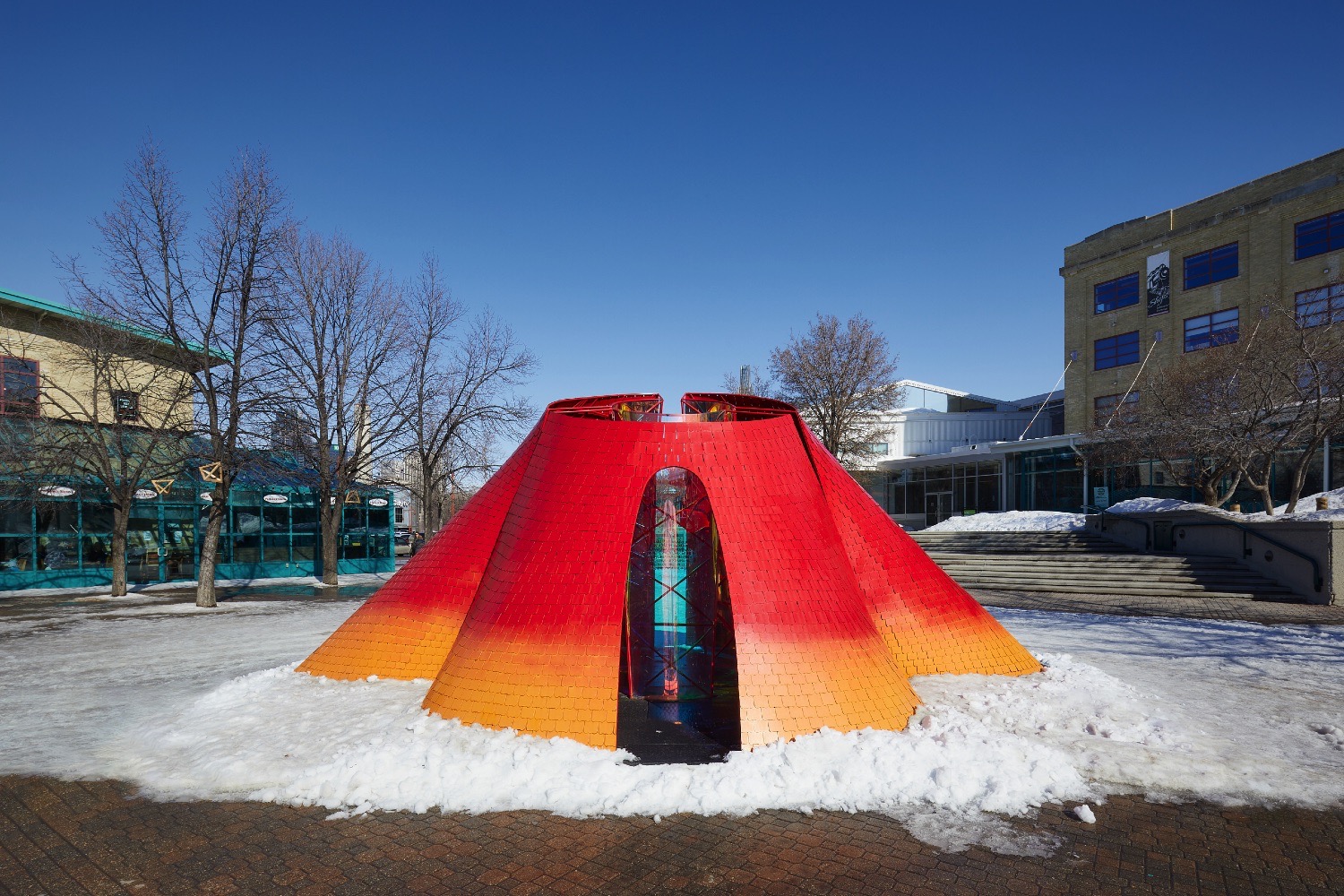Rainbow Butterfly, Winnipeg, Manitoba
A pavilion in Winnipeg is a place of commemoration—but also a welcoming space for gentle reconciliation.

Last year, Winnipeg’s Nestaweya River Trail included a striking ruby-red shelter. Its swooping form was inspired by the red jingle dresses that have become a symbol of commemoration for missing and murdered Indigenous women, girls, and LGBTQ2S+ people. Inside, a circle surrounded by iridescent panels opens up to the sky, creating a space of light and hope.
The project’s design was led by Indigenous architect Rachelle Lemieux, working with two other Indigenous women designers, Reanna Merasty (Ininew) and Danielle Desjarlais (Cree), and supported by Indigenous architect Ryan Gorrie (Anishinaabek), principal at Brook McIlroy, where all of the designers were working at the time.
“I’d always wanted to do a project like this,” says Lemieux, who remembers a call on Facebook seeking an Indigenous woman architect to take on the design. The initiative was spearheaded by Collective of Voices, a group of Menno Simons College students who met in a course on non-violent social change. The students, including Angela Lavallee and Sanjam Panag, decided to take their coursework into the real world, creating a place that would both commemorate Indigenous victims of gender-based violence and highlight the issue in a positive way.

As the project started, the design and client team met for a sweat-lodge ceremony, led by Indigenous elder Grandmother Candi-Ann Smith, where attendees shared stories of their loved ones who had been victims and impacted survivors of violence. “It was quite a different community stakeholder user group than I’d ever experienced, but it felt like the right way to begin the project,” recalls Lemieux. In the ceremony, they were gifted the pavilion’s name, “Rainbow Butterfly.” Back at the office, the designers started unpacking the name’s rich metaphors: “the butterfly is about metamorphosis and change; the rainbow that appears after a storm is about a positive outlook after something bad has happened,” says Lemieux.
The pavilion took shape as three interconnected pieces—representing a mother, daughter and grandmother—clad with small shingles that mimic the microscopic water-shedding scales on a butterfly’s wings. The three pieces each contain a differently sized doorway, reflecting the three generations, and together shelter the central circle.
The inner space is intended as a place of reflection and education: it is surrounded by panels inscribed with the Truth and Reconciliation Commission’s 231 calls to justice, and family members are invited to write the names of victims on pieces of cloth to tie to the rod structure. But it’s also a welcoming space for gentle reconciliation. “Seeing so many kids playing in it really warmed my heart,” says Lemieux. “It’s an activism and education piece for the people of Winnipeg,” adds Merasty, who values “having all those children and people passing through this, and being able to impact them.”
For Merasty, the piece has special significance as her first built work after completing her architecture degree. “It has levels of meaning for me, as an Indigenous woman,” she says. “Everyone involved felt its importance, which ended up creating something very significant.”
